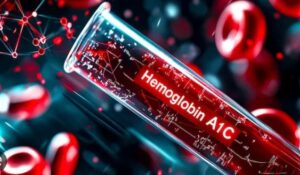From Blood Sample to Results: The A1C Journey
TriCore
November 13, 2025
 Most people know that the Hemoglobin A1C Test is the standard for diagnosing and managing Type 2 Diabetes and prediabetes. But have you ever wondered how it works?
Most people know that the Hemoglobin A1C Test is the standard for diagnosing and managing Type 2 Diabetes and prediabetes. But have you ever wondered how it works?
What is the A1C Test?
Diabetes is a disorder of how the body regulates blood sugar, or glucose. The A1C test (also called hemoglobin A1C or HbA1c) is a blood test that shows your average glucose levels
Why 2–3 Months?
Red blood cells live, on average, about 120 days, so the test gives a picture of long-term glucose control, not just a single day’s result like a fingerstick glucose test would. You can take the A1C test any time of day, even after eating. This makes it much more convenient than fasting glucose tests, which require you to avoid food and drink for 8+ hours.
How Does It Work?
- Glucose in your blood naturally sticks to hemoglobin, the protein in red blood cells that carries oxygen.
- The more sugar in your blood, the more it binds to hemoglobin.
- The A1C test measures the percentage of hemoglobin molecules that are coated with sugar — this is called glycated hemoglobin.
What Happens in the Lab?
- A blood sample is taken (usually from a vein).
- The whole blood is collected in a special tube with a lavender cap that contains an anticoagulant additive to prevent the blood from clotting and preserve the red blood cells.
- In the lab, automated analyzers detect how much of the hemoglobin in the sample is glycated. TriCore uses a methodology called Capillary Electrophoresis (CE), a well-established laboratory technique that uses an electric field to precisely separate different types of hemoglobin in a blood sample based on their size and charge. Different types of hemoglobin move at different speeds based on their size and charge, and the amount of sugar present on a given hemoglobin will impact the speed of its movement. This allows the machine to measure how much sugar is attached to them. CE delivers fast, reliable results with minimal interference making it one of the most reliable tools available for diabetes monitoring.
What Do the Results Mean?
Results are reported as a percentage reflecting average blood sugar over the past 2-3 months. — higher percentages mean higher average blood sugar.
Below 5.7% Normal
5.7–6.4% Increased Risk of Developing Diabetes
6.5% or higher Diabetes
Why It Matters
Understanding how the A1C test works- from blood draw to lab analysis- helps demystify the science behind diabetes care. We encourage everyone to stay informed, ask questions, and take proactive steps toward better health, because when it comes to managing diabetes, knowledge truly is power.